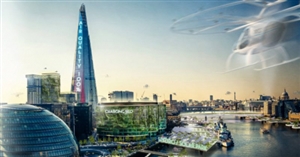When the whole world seems to be falling apart due to the actions taken by global political leaders faced with COVID-19 threats, what hopes are there for the near-term future to be more safe and sustainable? The new 'normal’ of the aerospace industry is indeed terrifying with thousands on furlough and laid-off. If there are any changes ahead, what are they and which directions are they coming from?
Arguably, those looking at the future of flight, in particular, Urban Air Mobility (or 'the flying taxis'), are feeling positive that the current difficulties will turn out to be opportunities for electric-powered aircraft set to carry people around one day. Are you?

We would welcome your comments regarding the topic of Urban Air Mobility and electrical vertical take-off and landing aircraft here as well as in our Q&A session at the end of the UAM - Hype or Hope webinar next week; please see the link below: https://bit.ly/2BjlpRh